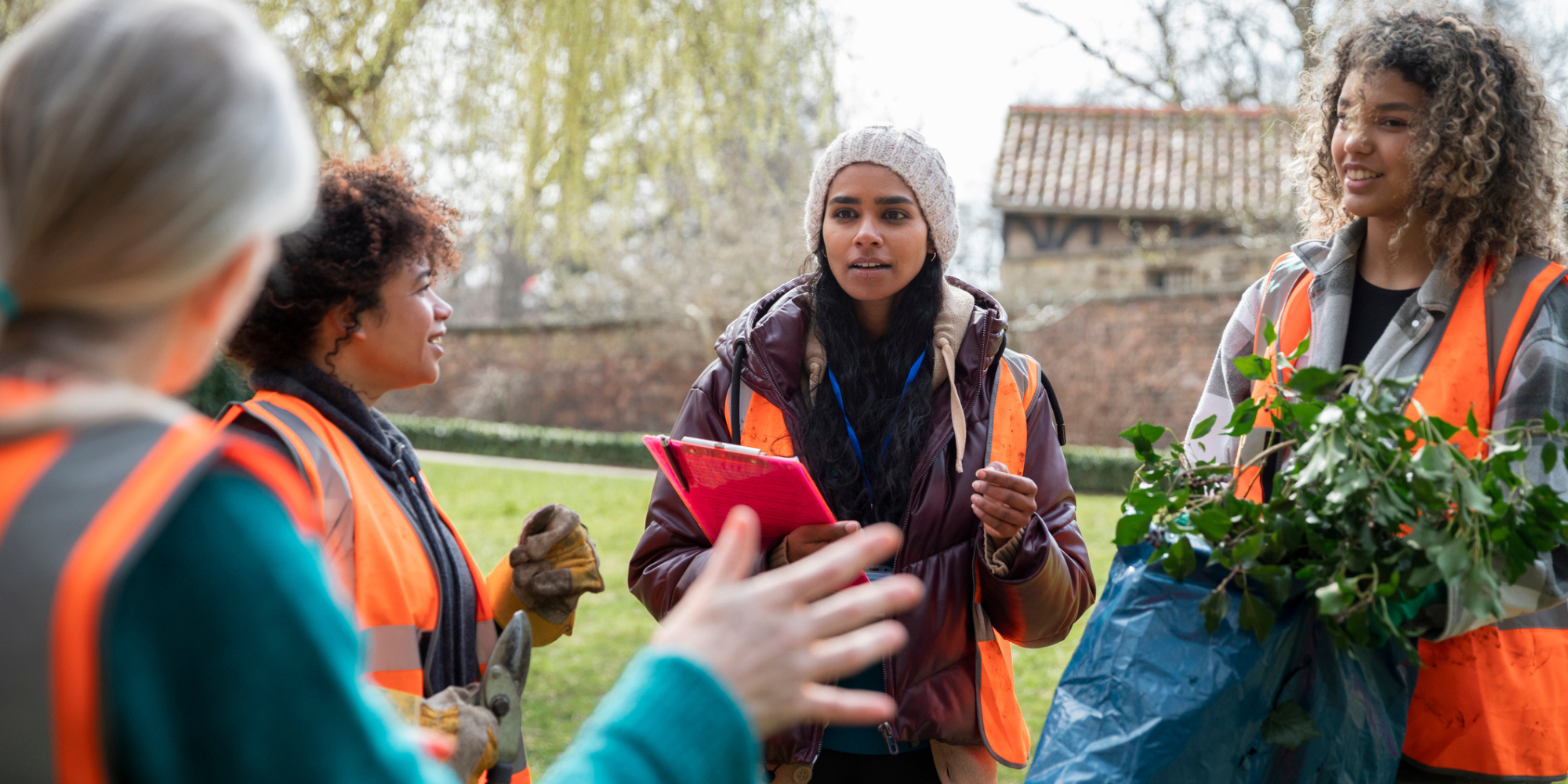Cities are facing unprecedented labor shortages, with the COVID-19 pandemic contributing to a surge of more than 3.5 million retirements since 2020. Moreover, the Bureau of Labor Statistics (BLS) forecasts that labor force participation among youth ages 16 to 24 will likely decline by more than 4 percent between 2020 and 2030. Meeting the needs of tomorrow’s governments, businesses and families will require charting a more decisive course for youth workforce development.
As youth enter the workforce, many are looking for careers in the growing sustainability field, which is ever more relevant with recent federal investments in climate-resilient infrastructure. Additionally, these roles, or “green jobs,” exist within an industry sustained by natural resources where opportunities are unlikely to diminish in the short or long term, especially as the demand for green talent (8%) will soon outpace supply (6%). Green jobs include careers in environmental science, renewable energy and resource management, as well as less apparent jobs such as urban planning, sustainable fashion, transportation and other areas with transferrable skills across sectors.
As local governments look to attract and retain the next generation of workers, they should consider ways to engage this increasingly environmentally engaged generation of talent. Currently, 98 percent of youth feel governments should do more to tackle climate change. This interest, combined with the greater demand for green-skilled labor and high-earning potential of these green jobs, should incentivize local governments to incorporate these roles into the municipal workforce. When developing these roles, local leaders should consider ways to create stronger pathways between youth and long-term labor participation.
Federal Funding Allows Green Jobs for Youth
Federal initiatives such as the American Rescue Plan Act (ARPA) and the Bipartisan Infrastructure Law (BIL) allow for further investment in youth engagement in paid work that meets infrastructure and conservation needs in communities. These needs are significant, as local infrastructure around the country needs repair, and infrastructure jobs are more challenging to fill than non-infrastructure jobs. Currently, 60 percent of infrastructure jobs require six months of training or less and can provide a fast on-ramp to well-paying and stable careers, yet the pathways into them remain largely unfilled.
Localities that leverage their younger workers to fill these critical jobs may increase their economic competitiveness and improve the economic trajectories of their residents. In addition to the broadly flexible ARPA State and Local Fiscal Recovery Funds (SLFRF), BIL specifically cites youth conservation corps as eligible entities to address climate-related infrastructure needs.
The Healthy Streets Program authorizes contracting priorities to youth and conservation corps members from disadvantaged communities. These youth help with tasks like mitigating the negative impacts of heat in urban areas, improving air quality, and installing permeable road surfaces that reduce the risk of flooding from stormwater runoff.
Additionally, BIL’s Wildfire Risk Reduction program provides $200 million to contract workers from existing local organizations like youth and conservation corps that engage young adults, especially native youth. For this initiative, youth workers help clear flammable vegetation on federal lands and produce biochar, a product that can mitigate the climate effects of carbon emissions.
Cities Encourage Youth Innovation
Many cities are already leading the way by connecting youth to these promising careers. The Office of Emergency Management, Planning Department and Mayor John Cooper’s Office in Nashville, TN, budgeted $150,000 of their SLFRF allocations to meet youth engagement and community development needs. The city collaborated with FUSE Corps to hire fellows to support extracurricular learning opportunities for Nashville’s youth and implement strategies to mitigate disaster and build long-term urban resilience.
Local leaders have also fostered youth interest in sustainability issues through more grassroots efforts. In 2022, San Antonio, TX, celebrated its fourth annual Student Sustainability Showcase, where K-12 students presented ideas for environmental improvement and civic engagement. Projects included recycling initiatives and community gardens. Some participants, who were also members of Mayor Ron Nirenberg’s Youth Engagement Council for Climate Initiatives, won grant funding from local environmentally conscious organizations for their projects.
Next Steps
As summer approaches, local leaders should capitalize on the potential of youth seeking employment and provide sustainability skills-building opportunities. This can be accomplished in a variety of ways.
- Developing public sector roles like those in seasonal parks and facilities maintenance or apprenticeships in municipal water or energy plants in youth employment programs. Positions such as these expose youth to careers in energy, land use and resource management, which are essential to a sustainable future.
- Collaborating with community partners to develop more youth employment opportunities. City-corps partnerships can support workforce demands by promoting children’s connections to nature through exploratory learning and mentorship. San José, CA, mobilized its corps to provide labor in support of their local food system needs, which can lead to more sustainable agricultural practices. As interest in green jobs increases, sustainable agriculture cultivation is one of the many industries projected to experience high job demand growth by 2030.
Today’s youth are the future stewards of the environment. It’s vital to deliver programs and access to roles where they can build skills that help prepare them for careers that interest them. As the sustainability field continues to grow, providing specific opportunities to develop the skills necessary for green jobs early on can better prepare youth for their future. Municipal leaders can leverage local resources and federal funding and collaborate with community partnerships to engage our nation’s youth as the future of the green workforce.
NLC is poised to support your city’s efforts to reengage youth in educational programs and develop high-demand employment programs. Learn more here about Youth Excel: Cities Advancing Equitable Youth Economic Recovery and Empowerment, The Reengaging Opportunity Youth in the South Initiative, and Building a Municipal Workforce for the Future.







